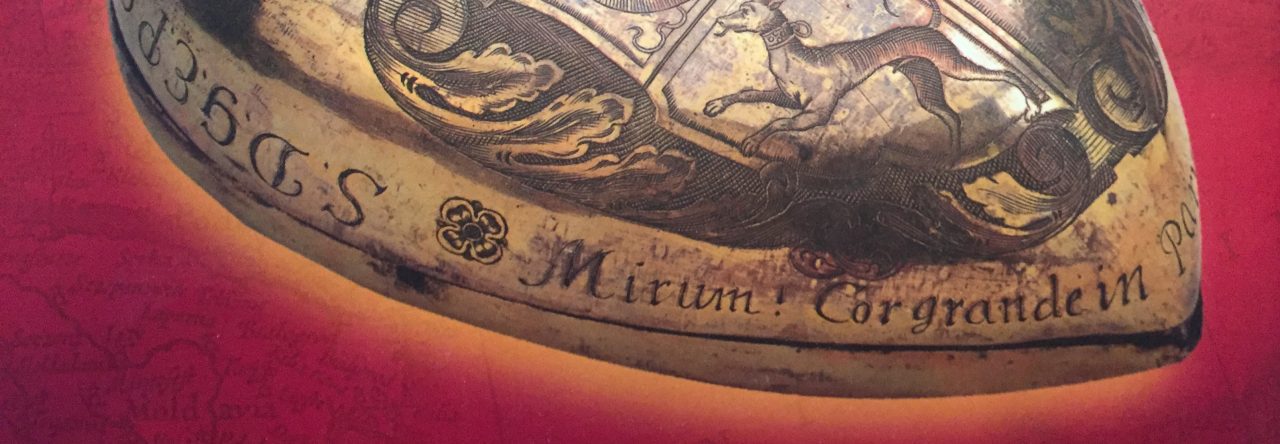The Middle Ages
The first reports of the removal of entrails and later of the hearts of fallen heroes and leaders come to us from the Middle Ages. If an army commander or a king fell in battle or died in a foreign country, it was impossible to bring the body home intact.
In those days there were two methods of burying a body (or at least part of it), either at home or at a place chosen by the deceased:
Burial methods
The first method was to boil the body, remove the flesh from the skeleton and to transport the bones back, often together with the flesh, which had been preserved with salt. The entrails were usually buried on the spot together with the heart. If it proved impossible to either transport the body home or conserve it, the heart at least was brought home, being the seat of the soul and therefore most important part of the body. Rich in association, the historians of the time called this custom “mos teutonicus” or “mors teutonicus”, meaning “German custom” or “German death”. When the emperor Friedrich Barbarossa drowned in the river Saleph on a crusade in 1190, his flesh was brought to Antioch, his bones to Tyre, and his heart and entrails to Tarsus.
The second method was to remove the viscera from the abdomen and chest (including the heart), and sometimes the brain as well, which would otherwise have led to the rapid decay of the body. These were then sealed in vessels which contained a saline solution or other preserving fluids. The body was embalmed with aromatic tinctures and preserving agents such as salt and herbs.Due to its magical significance for people in earlier times the heart either received special treatment or was brought home separately. Since the entrails were also bestowed with special powers, they were either buried at the place of death or brought home together with the embalmed body, where a double or triple burial took place.
Beneficial patrons
Another motive was the transition of the entrails (in Latin “translatio”), and particularly of the heart, to a beneficial patron as part of the worship of relics which had become fashionable during the emergence of the Middle Ages. Placed near the altar of saints and martyrs, especially their relics, this would ensure the everlasting salvation of the deceased.
It may be significant that the division into three parts could mean that the prayers of the believers for the deceased also being in three places would be more effective and long-lasting than in one single place.
The heart of a dead ruler could also demonstrate his claim to a certain part of his kingdom even after his death. It was for this reason that the heart of Richard the Lionheart was laid to rest in the cathedral of Rouen, in the middle of Normandy, his rebellious province.
Renaissance and Baroque
Later on, with the increase of this type of burial, the example of the sovereign and the effects of suggestion played an increasing role. The heart burial, above all of the ruling members, was institutionalised for certain dynasties, for example the Houses of Capet and Valois in France, and the Habsburg and Wittelsbach dynasties in mid-Europe. The court nobility followed the king’s or emperor’s example. In this era too, the translatio of the heart—in the case of the latter two ruling dynasties, to a very similar statue of the Madonna—played a decisive role.
Frequently, the hearts of relatives were reunited in death: The heart of the “last knight”, emperor Maximilian I is said to have come to rest in the coffin of his beloved first wife Maria of Burgundy, who died in a riding accident. However, there are no detectable traces. It is certain, though, that the heart of their son Philipp I “the Handsome” was put beside his mother’s coffin in the choir of the church of our Dear Lady in Bruges.
Whilst in earlier centuries it was the churches of the mendicant orders which were preferred as a final resting place, during the Counter-Reformation it was the Jesuits who attempted to obtain hearts of prominent figures for their churches, and encouraged this custom, in order to secure the goodwill of the families concerned.
Modern Times
The main motives remained the dynastic obligation, the desire to unite one’s heart with the heart of a beloved dead one, and affection for a particular place. Lord Byron (†1824) wished for his heart to be brought to his comrades in the mass grave in Messolonghi in Greece, whilst the heart of the founder of the modern Olympic Games, Baron Pierre de Coubertin (†1937) is enclosed in the stele in the grove of Olympia, in front of which the Olympic fire is lit every four years.
In the 19th century, the age of Romanticism, the attachment to both the myth and the mysticism of the heart led to the fact that the upper middle classes, artists in particular, wanted to immortalise their hearts in this way. Examples are the Austrian lyricist Nikolaus Lenau, the German Carl Loewe, composer of ballads, the Italian sculptor Antonio Canova, the wife of a German industrialist, Charlotte Elisabeth Speck von Sternberg and titled, praiseworthy upper-class personalities in Germany such as the Barons Süsskind and Cramer-Klett.
Last heart burial: Empress Zita
The last Austrian empress, Zita (†1989), was the final person, for the time being, who authorised her heart to be united with that of her husband, the last emperor of the Habsburgs, Charles I (†1922). The hearts of her son Otto of Habsburg (†2011) and his spouse Regina of Saxe-Meiningen (†2010) are resting in different places.

Leave a Reply